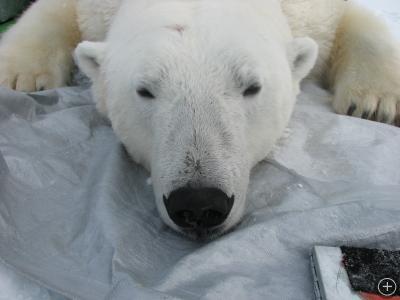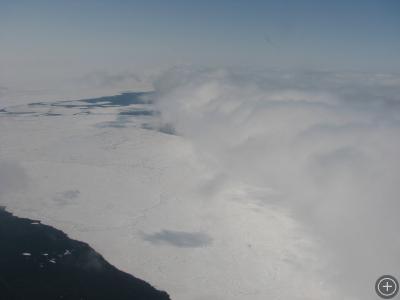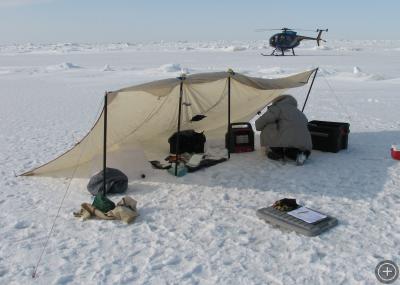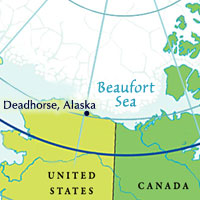How Fat Is a Polar Bear?
DEADHORSE, ALASKA– In the last dispatch, I wrote of polar bears getting by without food. In that situation – no food – the bears must be using body stores of fat for energy. Some bears can carry almost 50% of their body mass as fat. We take several measurements of how much body fat bears have, to track changes between early summer and late summer. One measurement is Bioelectrical Impedance Analysis, or BIA. It employs the same technology that some bathroom weight scales use to estimate body fat: a harmless current is sent through the body, and resistance to that current is measured. Resistance increases if the body contains more fat because fat contains little water, and water is a good conductor of electricity. To ensure the current cannot travel through damp snow, we insulate the bear from the ground by placing it on a tarp and several pads.

Footprints of the same male. His footprints are side-by-side and consist of two rounded prints topped with short, sharp imprints from his claws. My handprint, small by comparison, is just to the right.
Without food, it is generally thought that animals go through 3 phases of fasting. Phase I occurs directly after a meal, when an animal breaks down carbohydrates from the food for energy. In phase II, hours to days have passed since that meal. The animal begins to burn its body fat for energy, and importantly, the animal mostly avoids breaking down its protein (e.g. its muscles) for energy. Finally, in phase III, the animal runs out of body fat and begins to burn its protein for energy. These three phases are broad categories, and many animals prolong a phase or a transition between phases to survive periods without food. Polar bears in the summer may be in a prolonged phase II – we plan to find out using BIA and other measurements.
Weather has been poor this week. It has been overcast with temperatures mostly in the teens (Fahrenheit), and snowfall and ice fog dramatically reduced visibility. Some days we have not been able to fly at all; other days we launched but flew only several miles before being turned back by low visibility and icing conditions. Our helicopters are only instrumented for flight with visual references (in other words, they do not have the instruments which commercial airliners can rely on in reduced visibility) and there is no point in flying when you cannot see bears. While we wait for better weather I have been able to get other work done – and I have managed to catch the last twenty minutes of “The Incredible Hulk” movie twice, on the television in our living space. The skies began clearing during dinner this evening. Hopefully we will get out tomorrow!

 No comments
No comments 










